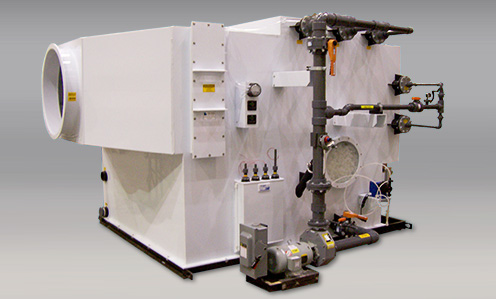

A major midwest metalworking facility uses 24 OM-1 Mist Collector units ducted to over 200 sources, including grinding, dressing, CNC machining, lathes and heat treating operations.
The units are highly effective against coolant mists, lubricant mists, and more. OM-1’s ability to accommodate smoke gives it an advantage over centrifugal-type oil mist collectors, which are not usable for smoke.
Both soluble and non-soluble oils are used in this facility. OM-1 collects oil mists from all lubricants and coolants, including mineral oils, synthetic lubricants and semi-synthetic lubricants, at 99%+ efficiencies.
OM-1’s low-pressure design minimizes energy use. The system is “HVAC-neutral” and exhausts clean air back into the plant, reducing make-up air, and minimizing heating and cooling costs.
OM-1 Mist Collector systems are made in capacities of 500 to 60,000 cfm and are low noise.
One OM-1 Mist Collector unit can duct to up to 12 mist sources. Systems have 3-4 stages. |
||
|---|---|---|
| 1 |  |
Stage 1 uses a 13-layer mesh filter media, and reduces mist loading. Operation is at 4" to 5½" of pressure across the unit; mist removal is 99%+ at three microns. |
| 2 |  |
Stage 2 is the coalescing stage, where smaller droplets are “grown”; a 16-layer filter achieves 99%+ efficiency at 3 microns. This oil mist performance rating is higher than for centrifugal collectors, indexing fabric filter systems and electrostatic precipitators. |
|
Gages at the first and second stages monitor static pressures across the filter pads and initiate a wash-down cycle when the set point is reached. |
||
| 3 |  |
Stage 3 uses six filter layers for final mist elimination. |
| 4 |  |
A fourth stage, using proprietary renewable media, is used for heat treating and other applications emitting smoke. Filter cartridges are easily removed and cleaned without interrupting operation. |
The link between coolant mist exposure and disease is well-established. By capturing oil mists, worker health is enhanced while the risk of fire from petroleum-based lubricants is reduced.